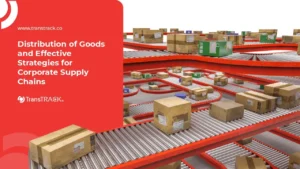Find Out the Function of the Carburetor and its Components!
Posted on September 13, 2023 by Nur Wachda Mihmidati

A carburetor is a device used in an internal combustion engine to mix air and fuel in the right proportions before being burned in the engine’s combustion chamber. The main function of a carburetor is to convert liquid fuel (such as gasoline) into a fine mist or spray and mix it with air thereby creating a flammable air-fuel mixture.
The carburetor works based on Bernoulli’s principle and the law of diffusion. Air flows through the carburetor and through a passage called the venturi. As the air moves through the narrowed venturi, the air pressure decreases, and this causes the fuel delivered by the fuel jets in the carburetor to be sucked into the air stream with the help of a vacuum effect. Inside the carburetor, there are a number of settings that allow the driver to adjust the air-fuel proportion according to the engine’s needs.
Older engines and most smaller internal combustion engines, such as engines in motorcycles and older cars, often use carburetors to regulate the air-fuel mixture. However, modern technology has replaced carburetors with electronic fuel injection which is more efficient and accurate in controlling the air-fuel mixture in the engine. Despite this, basic carburetor concepts are still important to a basic understanding of how internal combustion engines work. Find out more in depth through the following TransTRACK article!
What is the function of the carburetor in a car?
The carburetor in a car has several important functions in the fuel system and engine operation. Some of the main functions of a carburetor in a car are as follows:
Mix Air and Fuel
The main function of the carburetor is to mix air and fuel in the right proportions to form an air-fuel mixture that can burn efficiently in the engine. This mixture needs to be suited to the engine’s working conditions to ensure optimal performance.
Regulation of Mixture Proportions
The carburetor has various settings and fuel jets that allow the driver or engine to regulate the proportions of the air-fuel mixture. This allows adjustments for various needs, such as acceleration, constant speed and efficient fuel use.
Providing Supplemental Air
The carburetor can also provide additional air through the accelerator valve when the driver presses the gas pedal. This helps increase engine power and acceleration by providing a richer mixture when needed.
Idle Settings
The carburetor is also responsible for regulating engine rotation when the engine is idling. This is done via the idle adjustment screw which controls the amount of air entering the engine when it is idling.
Minimizing Emissions
A good carburetor will be designed to produce an efficient air-fuel mixture and reduce unburned exhaust emissions. This helps keep vehicles meeting emission standards set by environmental regulations.
Throttle Response
The carburetor also plays a role in determining the engine’s response to gas input. When the driver steps on the accelerator, the carburetor must respond quickly to provide the appropriate mixture and increase engine power.
It should be noted that modern engines generally no longer use carburetors. Most modern cars are equipped with electronic fuel injection systems that are more accurate and efficient in regulating the air-fuel mixture. Nevertheless, an understanding of the function of a carburetor is still useful for understanding the basics of fuel systems and engine operation.
Carburetor components
Below is a brief explanation of each component of the carburetor:
Float Chamber
The float chamber is the place in the carburetor that contains fuel. The float is in this chamber and controls the fuel supply to the carburetor.
Floater (Buoy)
The float is the component that floats above the fuel in the float chamber. When the fuel level drops, the float will lower, opening the fuel fill valve to refill the float chamber.
Choke Valve (Choke Valve)
The choke valve is a component that regulates air flow into the carburetor. It is used to enrich the air-fuel mixture when the engine is cold to make starting easier.
Venturi
The venturi is the part of the carburetor that narrows and produces a decrease in air pressure. This plays an important role in sucking fuel from the float chamber into the air stream.
Piston (Piston or Slide)
The piston or slide is a component that moves up and down in the carburetor. It controls the air flow into the engine according to power requirements.
Main Jet (Main Jet)
The main jet is one of the main fuel jets in the carburetor. This regulates the flow of fuel into the main air-fuel mixture.
Screw Control (Setting Screw)
The control screw is used to regulate the air-fuel mixture by changing the amount of air entering the carburetor.
Idle Jet (Idle Jet)
The idle jet regulates fuel flow when the engine is idling or idling. This ensures the engine stays running when stopped.
Slow Jet (Slow Jet)
Slow jets, also known as pilot jets, regulate fuel flow when the throttle is slightly stepped on, such as at low speeds or slow acceleration.
Economizer Jet (Economy Jet)
The economy jet is a component that controls the air-fuel mixture when the engine is running at a constant speed. This helps improve fuel efficiency.
Jet Needle
The jet needle is a component used to regulate the air-fuel proportion by changing the position of the needle in relation to the main jet.
Thermostatic Valve (Thermostatic Valve)
The thermostatic valve is an optional component used in some carburetors to regulate the air-fuel mixture based on engine temperature. This helps improve engine efficiency when the engine is hot.
All of these components work together to create an air-fuel mixture that suits the engine’s needs and operating conditions.
In order to ensure optimal performance and proper maintenance of your carburetor and entire vehicle system, it is very important to adopt a modern and effective vehicle maintenance solution such as the Vehicle Maintenance System from TransTRACK.
TransTRACK is a leading solution designed to make it easier for vehicle owners to track maintenance schedules, monitor engine performance and manage maintenance records efficiently.
By using the Vehicle Maintenance System from TransTRACK, you can ensure that the carburetor and entire fuel system of your vehicle are always in optimal condition. This will improve fuel efficiency, reduce emissions, and extend the life of your vehicle. So, don’t hesitate to integrate TransTRACK into your vehicle maintenance routine to keep your vehicle in top condition.
Recent Post
Topic :
Recommended Articles

 Bahasa Indonesia
Bahasa Indonesia








